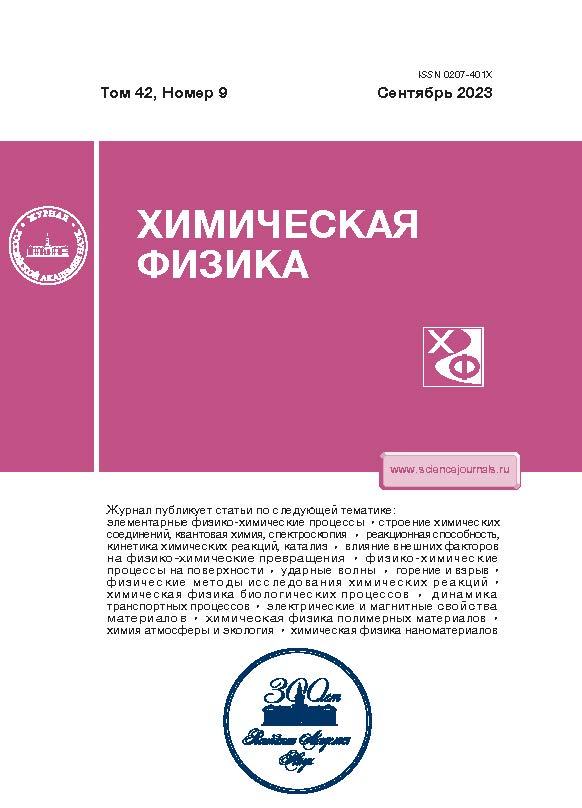The Mutual Influence of the Turbulence Coefficient and Reynolds Number on the Formation of a Turbulent Process: 1. The Randomness Coefficient
- Autores: Lebed I.V.1
-
Afiliações:
- Institute of Applied Mechanics, Russian Academy of Sciences
- Edição: Volume 42, Nº 9 (2023)
- Páginas: 83-91
- Seção: Dynamics of transport processes
- URL: https://rjpbr.com/0207-401X/article/view/674833
- DOI: https://doi.org/10.31857/S0207401X23090054
- EDN: https://elibrary.ru/TJIPYI
- ID: 674833
Citar
Texto integral
Resumo
The equations of multimoment hydrodynamics, supplemented by stochastic components, are used to study the chaotic distortion of a regular flow in the wake of a sphere. The mutual influence of the Reynolds number and the intensity of weak disordered perturbations in the incident flow, characterized by the turbulence coefficient, is investigated. The calculations show that the turbulent flow pattern is formed due to the excessive growth of disordered perturbations in the unstable recirculating zone in the near wake behind the sphere. The transition from laminar to turbulent motion has a considerable length on the Reynolds number scale. The turbulence coefficient is a key factor influencing the formation of a turbulent flow pattern. Low values of the turbulence coefficient can block the occurrence of turbulence even at arbitrarily high values of the Reynolds number. On the contrary, high values of the turbulence coefficient can initiate turbulence even at relatively low values of the Reynolds number. The degree of the development of turbulence is interpreted in terms of randomness coefficients depending on the Reynolds number and the turbulence coefficient. The previously formulated idea on the nature of turbulence is confirmed. The regular component of turbulence is formed as a result of unstable motion of coherent structures. Excessively expanding disordered perturbations form the chaotic component of turbulence.
Sobre autores
I. Lebed
Institute of Applied Mechanics, Russian Academy of Sciences
Autor responsável pela correspondência
Email: lebed-ivl@yandex.ru
Moscow, Russia
Bibliografia
- Alfonci G. // Appl. Mech. Rev. 2009. V. 62. № 040802.
- Sagaut P. Large Eddy Simulation for Incompressible Flows. N.Y.: Springer, 2006.
- Лебедь И.В., Уманский С.Я. // Хим. физика. 2007. Т. 26. № 1. С. 65.
- Лебедь И.В. // Хим. физика. 2014. Т. 33. № 4. С. 1.
- Kiselev A.Ph., Lebed I.V. // Chaos Solitons Fractals. 2021. V. 142. № 110491.
- Taylor G.I. // Proc. Roy. Soc. London. A. 1935. V. 151. P. 421.
- Moffatt H.K. // J. Fluid Mech. 1981. V. 106. P. 27.
- Киселев А.Ф., Лебедь И.В. // Хим. физика. 2021. Т. 40. № 1. С. 79.
- Киселев А.Ф., Лебедь И.В. // Хим. физика. 2021. Т. 40. № 6. С. 80
- Lebed I.V. // Physica A. 2019. V. 515. P. 715.
- Lebed I.V. // Physica A. 2019. V. 524. P. 325.
- Лебедь И.В. // Хим. физика. 1997. Т. 16. № 7. С. 72.
- Lebed I.V. The foundations of multimoment hydrodynamics, Part 1: ideas, methods and equations. N.Y.: Nova Sci. Publ., 2018.
- Chomaz J.M., Bonneton P., Hopfinger E.J. // J. Fluid Mech. 1993. V. 234. P. 1.
- Лебедь И.В. // Хим. физика. 2022. Т. 41. № 1. С. 77.
- Лебедь И.В. // Хим. физика. 2022. Т. 41. № 4. С. 81.
- Sakamoto H., Haniu H. // J. Fluid Mech. 1995. V. 287. P. 151.
- Mikami F., Toyota R., Nishikawa N. // J Phys: Conf. Ser. 2010. V. 216. № 012013.
Arquivos suplementares













